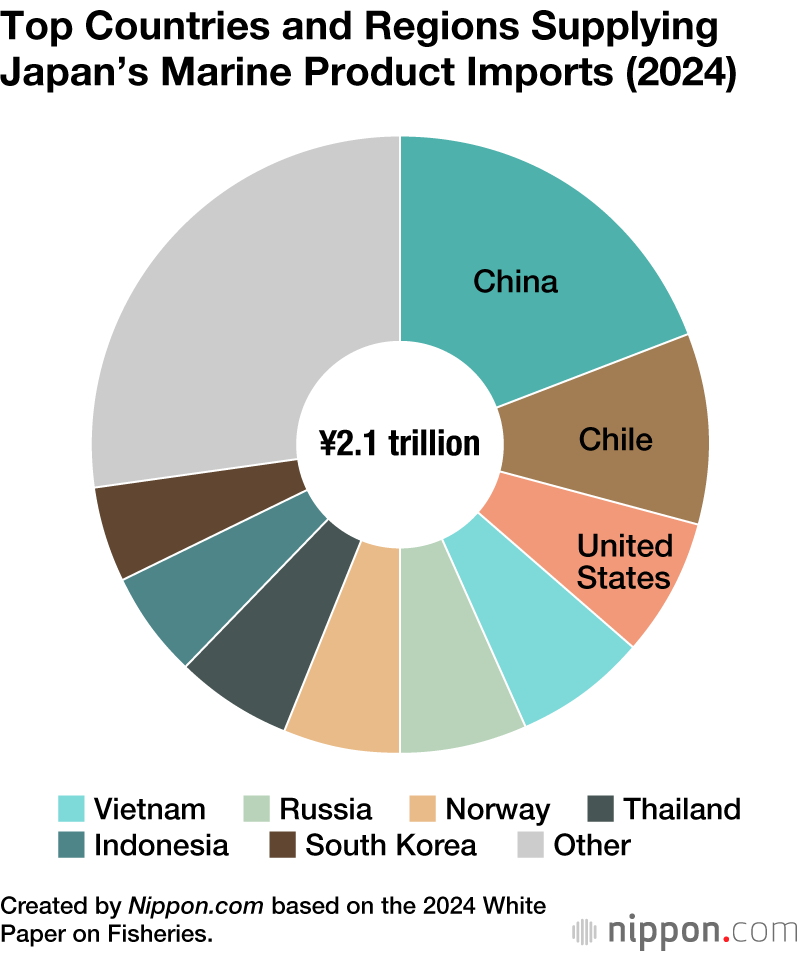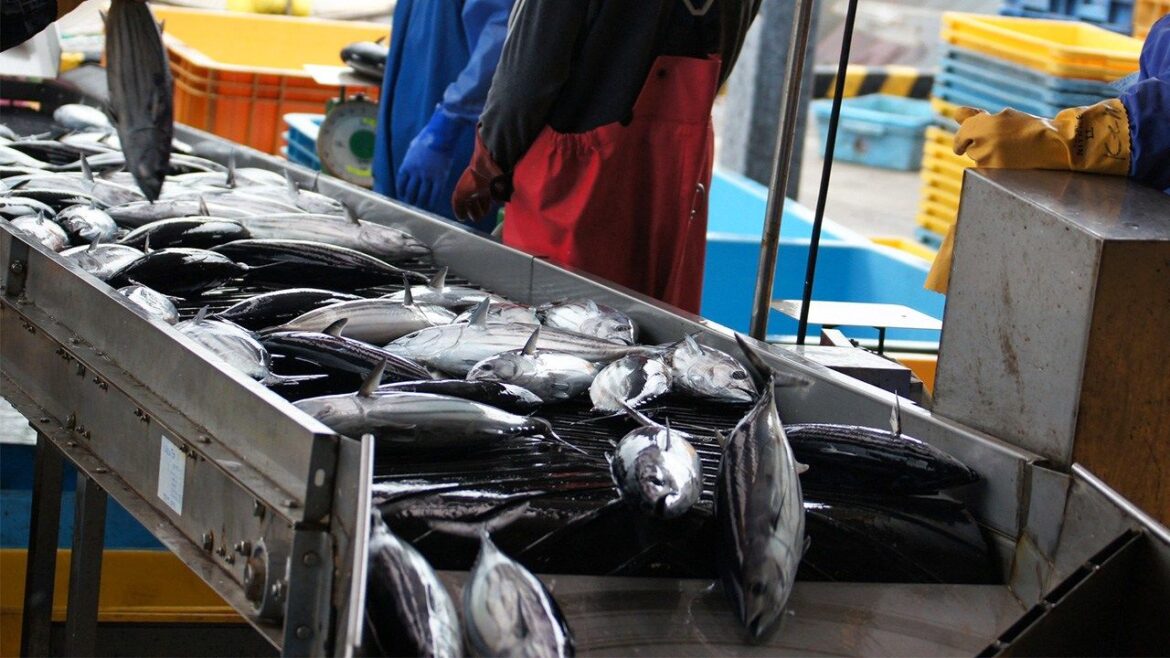Japan’s fisheries production value rose 5% in yen terms in 2023, while the volume fell by 2%. Catches of Pacific saury, Japanese common squid, and salmon have plunged over the past decade.
According to Japan’s fiscal 2024 White Paper on Fisheries, in 2023, Japan’s fishing industry and aquaculture production value was ¥1.7 trillion, up 5% year on year. A spike in the price of fishmeal has sent the cost of sardines rising to their highest level in 20 years.
The marine fishing value was ¥953.4 billion, up 4%, while the value for marine aquaculture rose 10% to ¥595.6 billion, boosted by an increase in prices for nori seaweed. Meanwhile, the combined value for inland fishing and aquaculture fell by 3% to ¥136.3 billion. The overall production volume fell by 2% to 3.8 million tons, which is around 30% of its peak of ¥12.8 million tons in 1984.
Aquaculture accounted for 23% of overall volume at 880,000 tons, but 43% of value at ¥716.9 billion.

Japan’s self-sufficiency rate for edible seafood was approximately 54% in fiscal 2023, down two percentage points year on year. This rate has been on a long-term downward trajectory since peaking at 113% in fiscal 1964. The annual consumption of seafood per capita stood at an estimated 21.4 kilograms, down 0.1 kilograms. This figure peaked in 2001 at 40.2 kilograms; consumers have been steadily buying less fish and related products ever since.
Large Decrease in Export Value
Japan’s marine product imports by volume remained unchanged in 2024 at 2.2 million tons, while the value rose by 2.2% to ¥2.1 trillion. The leading suppliers of Japan’s imports were China, Chile, and the United States, while the top three kinds of products were salmon/trout, shrimp, and bonito/tuna.

Japan’s marine product export volume decreased by 5.5% in 2024 in 450,000 tons, while the export value dropped by 7.5% to ¥360.9 billion. China has maintained an import ban on Japanese seafood products since the first release of treated water from Fukushima Daiichi Nuclear Power Station in 2023 (finally lifting it partially at the end of June this year). The main export destinations were Hong Kong, the United States, and Taiwan, and the main products were scallops, buri (yellowtail), and pearls.

The 2024 White Paper included a special feature on how climate change, such as rising sea temperatures and changing currents, is affecting the fishing industry. It reports that the combined catch for Pacific saury, surumeika (Japanese common squid), and salmon plummeted by around 80% from 548,000 tons in 2014 to 107,000 tons in 2023.

Data Sources
(Translated from Japanese. Banner photo © Pixta.)


AloJapan.com